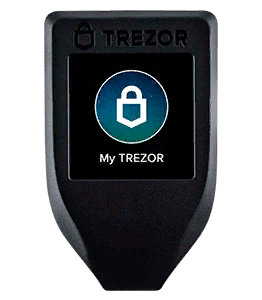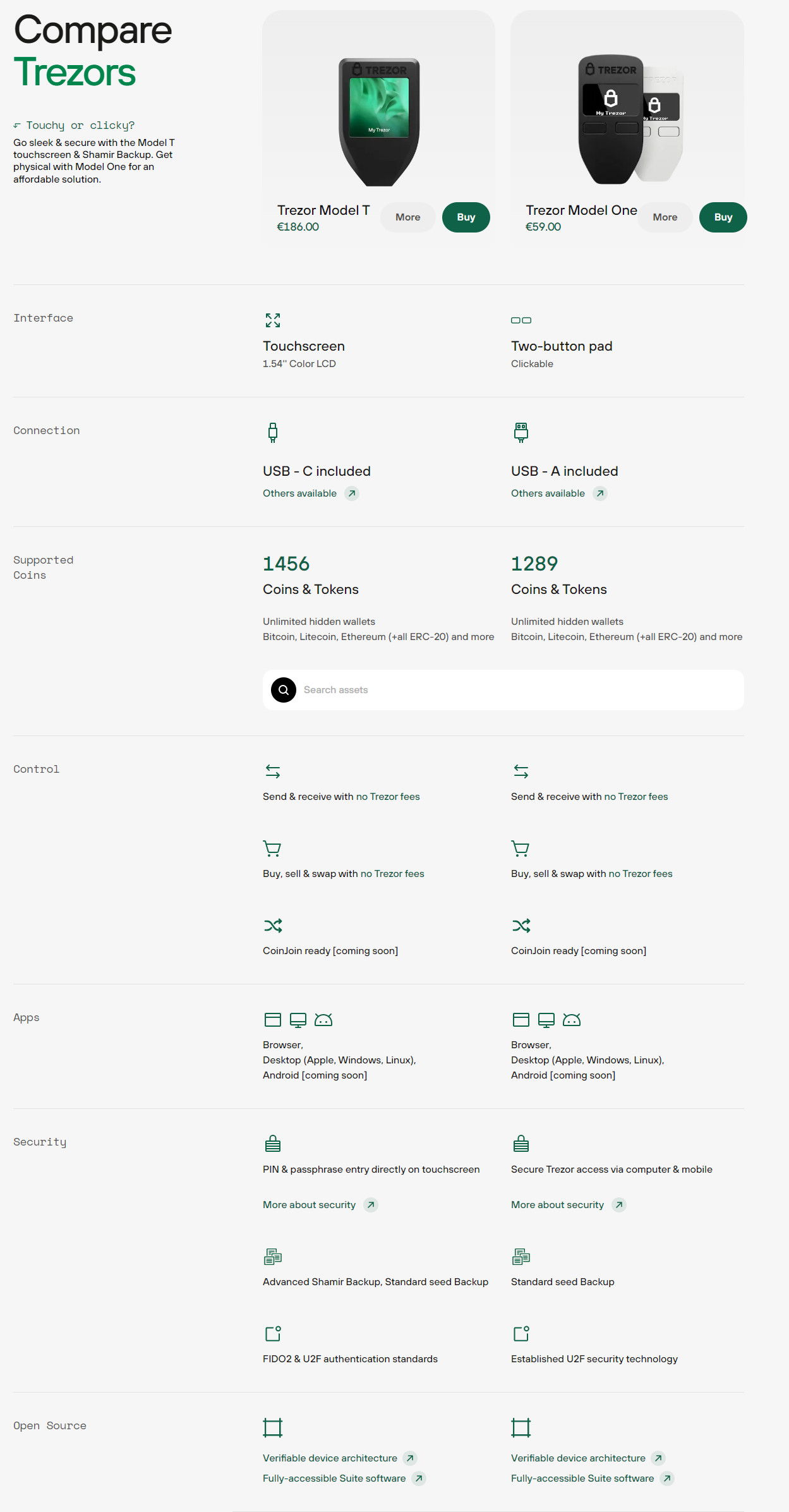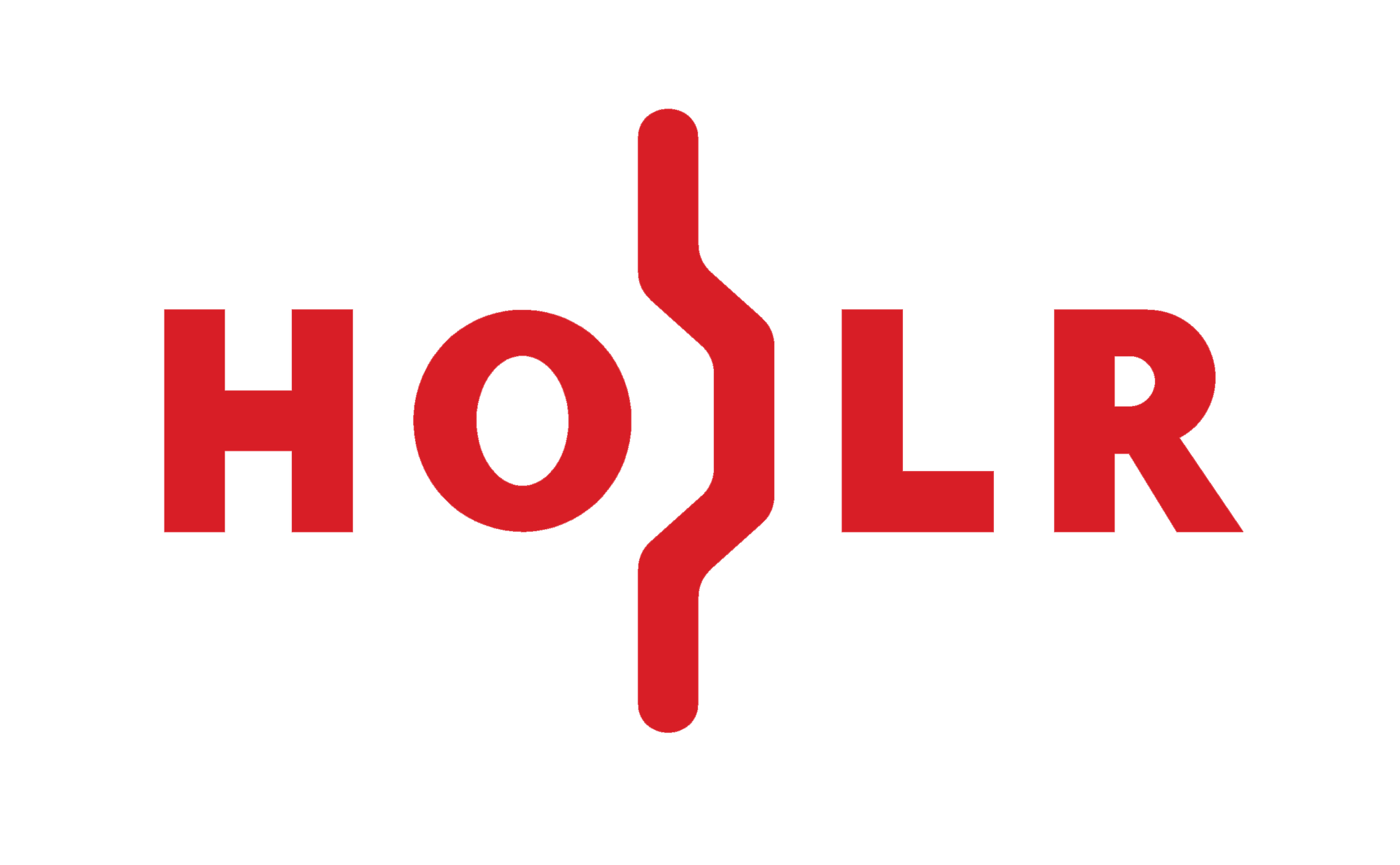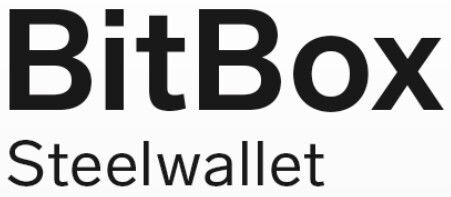Trezor Hardware Wallet Review & Guide

Trezor Model One and Trezor Model T Hardware wallets are the world's first hardware wallets, devices that allow the user to safely store sensitive data, such as cryptographic keys used for authentication. Invented to protect the owners of bitcoin and other cryptocurrencies, they simplify the management of your portfolio, significantly reducing the risk of losing coins due to many common attacks, including malware and phishing.
Where are Trezor Model One and Trezor Model T hardware wallets sold?
You can buy these hardware wallets directly from the:
- Official Online Shop Trezor
- Online Stores of official local trusted resellers
- Amazon
- Amazon with Purse, a 20% average discount: Spend Bitcoin or Bitcoin Cash
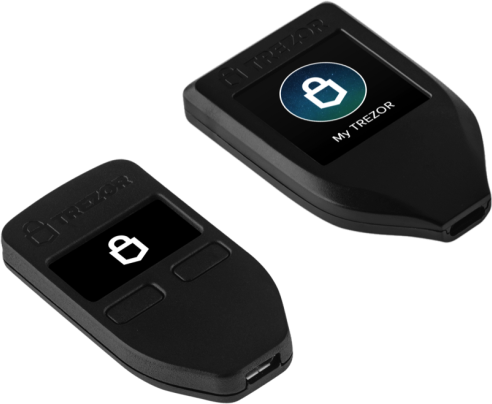
Content:
What Trezor does
Unboxing
- Packaging and supply chain
- Contents
- Other accessories which are sold separately
How Trezor works
- Trusted Display
- Computer interface: Trezor Suite
Device specifications
Trezor Model T
- Hardware
- Shamir backup: a better way to protect recovery seeds
- Look, weight and feel
Trezor Model One
- Hardware
- Look, weight and feel
Getting Set Up for Review
- Unbox your Trezor
- Download Trezor Suite
- Onboarding
- Generating a recovery seed
- Generating a shamir backup
- Setting a PIN
- Passphrase
Trezor Suite
Using Trezor Suite
- Core functions
- Send and receive cryptocurrency transactions
- Address management
- Replace by fee (RBF) for Bitcoin and Ethereum
- Locktime
- Messages using OP_Return
- Labeling
- Buy and exchange
- Privacy tools
Compare Trezor Hardware Wallets: Advanced Crypto Security
What Trezor does
When Bitcoin started growing more popular, security became a concern. While the value was low, few people took precautions to protect their coins. SatoshiLabs created the Trezor hardware wallet to make sure that everyone was able to hold on to their coins safely without falling victim to the growing number of hacks and scams present in the community.
A hardware wallet does not hold Bitcoin or any other cryptocurrency, those always remain on the network. Rather, it stores the private key that gives access to those coins. That means a Trezor can be used for other kinds of authentication as well as for crypto.
While banks might be secured only by passwords, they are usually insured or capable of reversing transactions. Cryptocurrencies require greater security as transactions are irreversible and full responsibility for managing them lies with the key owner. Trezor lets you take full control of your keys without exposing them to leaks or hacks and reducing the chances of a successful phishing attack.
Together with the Trezor Suite desktop and web interface, SatoshiLabs has succeeded in creating a verifiable secure ecosystem that allows its users to not only hodl their favourite cryptocurrencies, but also buy, sell and exchange them securely, privately and easily.
Unboxing
Packaging and supply chain
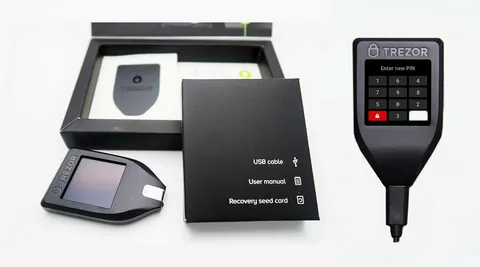

Trezor wallets are manufactured in the heart of Europe, the Czech Republic, where they are also packaged for transport. They are distributed through trusted suppliers including Amazon, where Trezor products are kept in their own separate containers to avoid compromised products being introduced into the supply chain.
The packaging of the Trezor Model One comprises a tamper-evident box sealed with a holographic sticker; the box is glued shut. The Trezor Model T has a holographic seal over the USB port. If any of these components appear damaged, counterfeit or otherwise tampered with, it should be considered a first warning that someone may have intercepted the device.
It is more likely to be a manufacturing defect so additional steps should be taken before returning the device.Where uncertain, additional checks can confirm tampering. These include checking if the device has already been set up, or the bootloader detecting an invalid firmware signature.If a device bought from an official seller appears to have been compromised, customers should contact Trezor to receive a replacement.
Contents
Depending on the product, you will find the following accessories included with your Trezor hardware wallet:
| Trezor Model T | Trezor Model One |
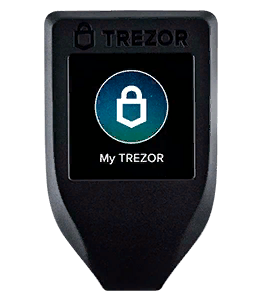 | 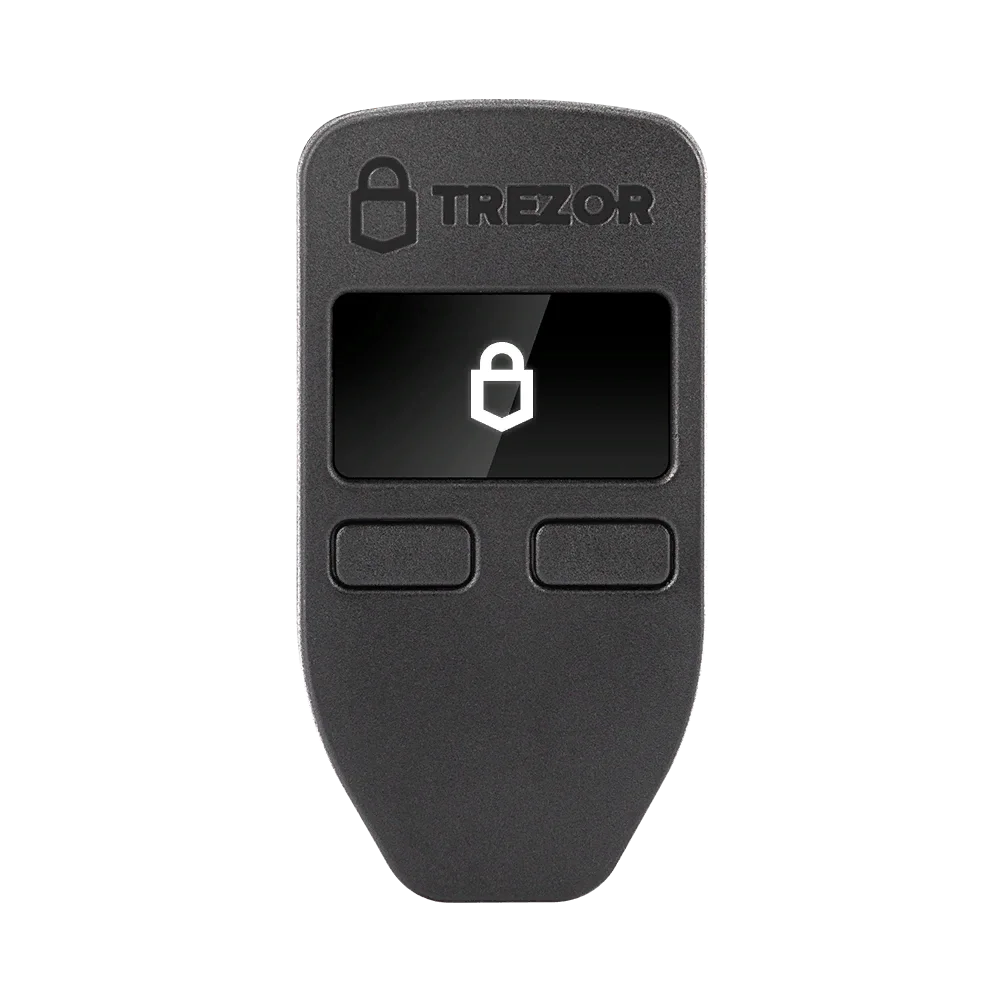 |
| Welcome leaflet | Welcome leaflet |
| USB-C to USB 2.0 cable | USB-C to USB 2.0 cable |
| Recovery seed card x 2 | Recovery seed card x 2 |
| Trezor stickers | Trezor stickers |
| Magnetic dock | Trezor lanyard |
Other accessories which are sold separately
A number of extras are available to make it more convenient to use Trezor every day and on the go. This includes Trezor-branded, high-quality lanyards as well as silicone and leather cases, useful solutions such as metal backups for recovery seeds, and different types of cables to suit different uses. All can be found on the Trezor Online Shop.
How Trezor works
Trezor hardware wallets are used to protect your cryptocurrency private and public keys from online and physical attacks. It is important to understand that wallets do not store the coins themselves, but rather the keys that unlock them and allow them to be moved to a new address.
The device stores your seed phrase in internal memory, with no way for a network to reach it. The keys’ isolation is achieved through the strict rules of the connection which produce a limited interface with very specific commands. When a transaction is made,precise details of the transaction are passed to the device for signing with the keys, and the signed transaction is sent via the host computer.
Trusted Display
All Trezor hardware wallets are built around the concept of a Trusted Display that helps identify any changes which may have been made to the transaction before it is sent. This means that no matter what you are shown on the host machine, the details shown on your Trezor screen are the details which will be signed. Even if malware tries to trick youinto sending a transaction to an attacker’s address, the trusted display will show that it isa different address from the one you meant to send to, so you can cancel and resend the transaction from an uncompromised computer.
Computer interface: Trezor Suite
For ease of use, Trezor hardware wallets are used with a software interface. Trezor Suite is SatoshiLabs’ latest wallet interface, offering a host of features that allow you to do more with your device, including masking internet connections with Tor and buying crypto directly to your Trezor without risking custody along the way. Many exciting new features including full node support, CoinJoin and a mobile app are also in development, making the Trezor ecosystem the most complete cryptocurrency storage solution on the market.
While both devices support over a thousand different coins and tokens,Bitcoin-only firmware is also available.
Device specifications
Trezor Model T
The Trezor Model T is the most advanced hardware wallet produced by SatoshiLabs.Its design centres around a large, full-color touchscreen, which makes it easy to review critical transaction signing data and perform all sensitive actions offline. This touchscreen also makes the Trezor Model T the only FIDO2 authenticator with a touchscreen,improving security by clearly displaying credentials of the counterparty when accessing an account.
Hardware
The device is built around a 168 MHz embedded ARM processor (Cortex-M4) running a custom developed system, Trezor Core. All Trezor hardware and software is open-source,delivering security through transparency.
The touchscreen is a bright color LCD with a resolution of 240 x 240 pixels. It will fit all transaction details on one screen and can scroll through data.
The Trezor Model T does not use a secure element so as to preserve transparency, as there are negative security implications in using closed-source secure elements. Data can instead be encrypted by a passphrase. In the future, Tropic Square’s open-source chip will provide enhanced security, transparently.
Shamir backup: a better way to protect recovery seeds
Features of the Trezor Model T overlap a lot with the Trezor Model One, but there are some very useful features unique to the Model T. Shamir backup, a new standard for recovery seeds (SLIP-39), improves security and introduces redundancy to BIP-39mnemonics which was created by a team including SatoshiLabs founders Slush and Stick. Shamir backup delivers the only secure way to split a recovery seed into multiple shares.
The Shamir HODL Pack is a convenient and reliable way to securely distribute your recovery seeds to protect yourself against the threat of device loss, theft, and damage. With a hefty design weighing in at 1.1 lb (515 g) each, Cryptosteel capsules are virtually indestructible and are designed to survive the test of time.
What is Cryptosteel Capsule? And why do I need one?
The Cryptosteel Capsule is the premier backup tool for autonomous offline storage of valuable data without any third-party involvement. The solid metal device, designed to survive extreme conditions, works under nearly all circumstances.
Our solution combines the age-old idea of engraving – in a DIY assembly format – with material that is stainless, shockproof, acid-resistant and fireproof up to 1400C/2500F. It is compatible with most secret sharing and key generation algorithms, and keeps the enclosed data secure. Even in cases of aggressive acts such as theft, bribery, vandalism or violence your master secret can remain safe forever.
There is no third party involved in keeping your data safe. And our metal capsule beats paper, wood, and corrosive metals in terms of durability. It is affordable, non-toxic, and hard to detect using next-gen methods of surveillance.
With Cryptosteel, your most sensitive information is both hacker-proof and safe from natural disasters.
Look, weight and feel
Built to be compact, lightweight and durable, the Trezor model T fits comfortably in a pocket or on a keyring. The Trezor Model T casing is made of reinforced durable plastic,which is bonded together through ultrasonic welding. This method makes the device tamper-resistant since it can not be cleanly pieced back together if the device housing has been forced open.
While it is a good idea to keep a backup wallet in a secure location, the Trezor Model T is designed to be used as an everyday item that lets you manage your crypto portfolio aswell as your online identities, even on the go. It does not use a battery, instead drawing power from the host machine over USB. The Model T is fitted with a USB-C port chosen to provide a firm hold.
Specific dimensions and weight of the Trezor Model T are as follows:
- Size: 64 mm x 39 mm x 10 mm (2.52 in x 1.54 in x 0.39 in)
- Weight: 22 g (0.77 oz)
Trezor Model One
The Trezor Model One is the original hardware wallet, the first hardware wallet to be commercially available and the basis of dozens of other manufacturers’ designs. The Model One is all anyone needs to use cryptocurrency safely and easily. Monthly firmware updates keep it easy to use even as its features expand, while its open-source nature means it is supported by all the biggest exchanges and platforms.
Hardware
The Model One uses a 120 MHz embedded ARM processor (Cortex M3) running a custom developed system. This provides a responsive user-experience and quick signing time, even under extreme multisignature testing scenarios.
The monochrome screen is a bright OLED with a resolution of 128 x 64 pixels. This is enough to fit six lines of text, so it can show all details needed to verify a transaction on a single screen. For navigation, the Model One has two durable and responsive buttons.
The Trezor Model One does not use a secure element so as to preserve transparency, as there are negative security implications in using closed-source secure elements. Data can instead be encrypted by a passphrase.
Look, weight and feel
The Model One is one of the most durable wallets available and it will not damage easily through regular use. It is extremely compact and weighs the same as a half-dollar coin, which makes it excellent for use as an everyday security token.
The casing of the Trezor Model One is made of reinforced durable plastic, which is bonded together through ultrasonic welding. This method makes the device tamper-resistant since it can not be cleanly pieced back together if the device housing has been forced open.
The buttons on the model respond well with a satisfying, clear action, even when protected inside the custom silicone case which is available separately. It does not use a battery, instead drawing power from the host machine through a Micro-USB port.
Specific dimensions and weight of the Trezor Model One are as follows:
- Size: 60mm x 30mm x 6mm (2.4in x 1.2in x 0.2in)
- Weight: 12 g (0.42 oz)
Getting Set Up for Review
Unbox your Trezor
Check the box for tampering: Model One packaging should be well-sealed with holographic stickers on the packaging, intact; Model T devices have a holographic seal covering the USB-C port which leaves a residue when removed. If there are no signs anyone has tried to open the box, proceed to cut or tear it open. You will find your device held snugly in place with the following accessories included:
| Trezor Model One | Trezor Model T |
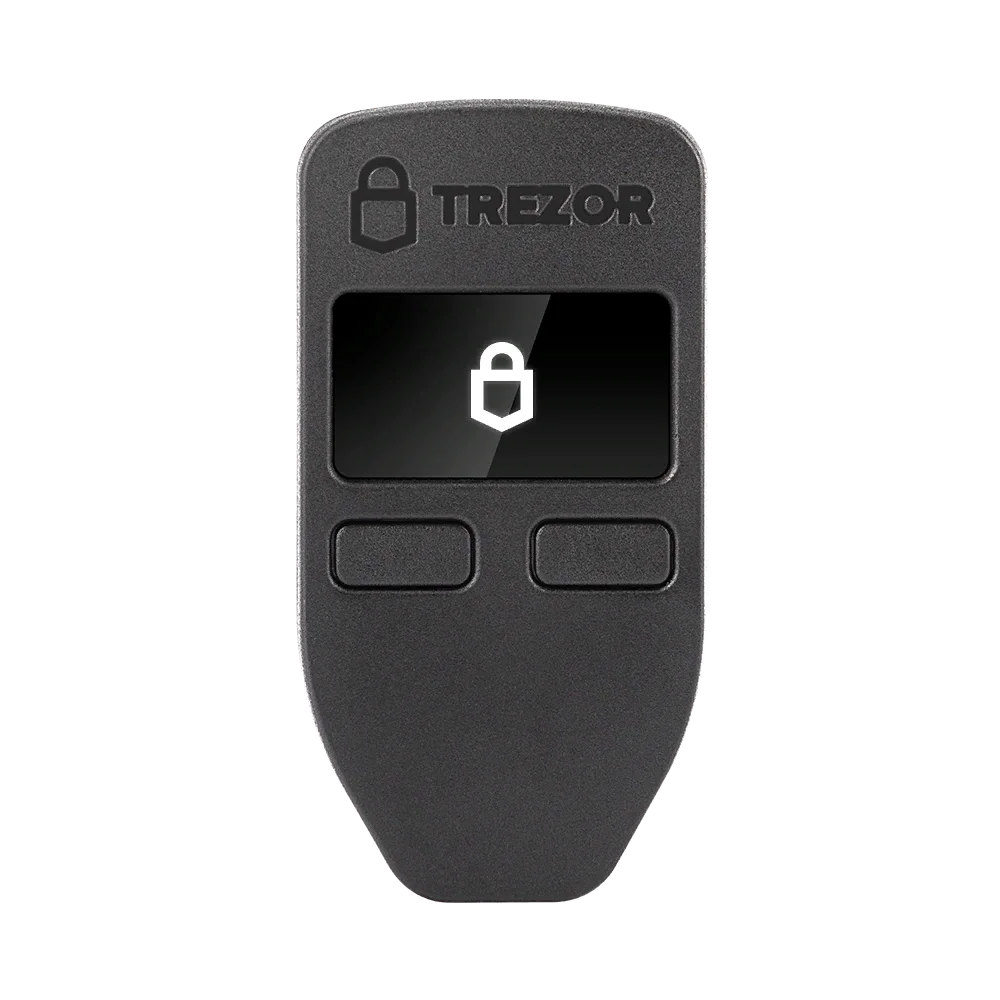 | 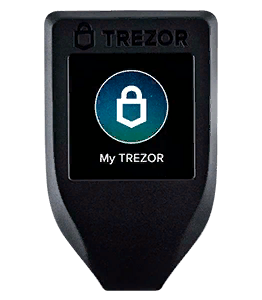 |
| USB cable (type B) | USB cable (type C) |
| Lanyard | Magnetic dock |
| Getting started card(package) | Getting started card(package) |
| 2 recovery seed cards(24 words) | 2 recovery seed cards(24 words) |
| 4 stickers | 4 stickers |
Download Trezor Suite

Visit the Trezor Suite landing page and download the version that runs on your operating system. The desktop version of Trezor Suite is available for MacOS, Windows 8 and up, aswell as Linux x86 and ARM.
Trezor Suite is also available through a browser at https://suite.trezor.io/web/. Using the desktop version is recommended to reduce exposure to phishing websites.
Onboarding
Open Trezor Suite and connect your device. The onboarding wizard will take you through a security check before proceeding with setup. This involves a few questions about the history of your Trezor and checks for pre-installed firmware. If the device is new and firmware is detected, this is a big red flag and you should return your device. If the device is empty, it is safe to proceed.
Generating a recovery seed
A recovery seed is a list of 12, 18 or 24 words, which is used as a secure but human-readable way to generate the keys, accounts and addresses that you access through your Trezor. The Trezor Model One uses 24 words by default while the Model T uses 12. These can be considered equally secure as although 12 words provide 128 bits of entropy while 24 provide 256, Bitcoin’s secp256k1 elliptic curve only amounts to security of around half of the 256 bits used.
The most important thing Trezor does for your security is to generate the seed completely offline. Statistically, your seed is practically impossible to guess as it is essentially anumber that has never existed in the history of the universe. If it is exposed to a network or copied into any digital form, it is no longer a unique number.
Write down your seed when it is generated. This physical copy lets you recover your keys if your device ever fails, is stolen, or you lose access to it.
Generating a shamir backup
Instead of a regular one-list recovery seed, there is an Advanced backup option. This is Shamir backup, a way to create multiple shares of 20 words, which then need to be combined to restore the wallet. There is a threshold of redundancy that lets you restore a wallet even if you lose one or more share, depending on the number of shares you generate. Requiring 2-of-3 or 3-of-5 shares is common, but it is highly customisable.
Each share can be held in different places or with different people, to suit individual needs. This backup method is a very effective way to protect against loss of your shares,and it also allows you to securely pass on your keys in your will for inheritance.
Setting a PIN
The PIN is a security feature intended to keep your device secure while in use. Trezor wallets use a randomized keypad generator to input your PIN, helping obscure it from any onlookers. PIN entry for the Model T is performed on the device, while the Model One uses a numberless grid pattern on the host machine for secure PIN entry.
Passphrase
Using a passphrase is a good idea for a variety of reasons: it allows the creation of ‘decoy’wallets and prevents sophisticated physical attacks on the device. Passphrases can take many forms, and it is important to understand what makes a good passphrase. There is no such thing as an incorrect passphrase, any phrase will create a wallet: make it easy to remember but randomised - not something found in a book or online.
Trezor Suite
As the main software interface for Trezor hardware wallets, Trezor Suite is a new desktop and browser application aimed at giving the best user experience while ensuring privacy and security when using cryptocurrencies.
Trezor Suite can be downloaded from suite.trezor.io.
For new users, Suite offers a full on-boarding, which highlights the importance of storing your seed phrase and helps get you set up with a passphrase and PIN. Some additional advice on storing your seed can be found on Trezor blog.
The Trezor Suite interface makes it straightforward to organise different addresses,wallets and cryptocurrencies. Labelling and smart search functions make it easy to organise payments for accounting purposes.
Our fee calculator will make sure your payment arrives when you need it to, while also warning you if the fee is unnecessarily high. In addition, fees can be set low to begin with then increased using the replace-by-fee (RBF) toggle. Transactions can also be delayed by using the locktime feature.
For privacy, particularly notable features include the Tor switch, which reroutes your connections for greater anonymity, and discreet mode, which will blur sensitive data,showing only the data under your cursor.
Using Trezor Suite
Trezor Suite is designed to make it easy to use your hardware wallet in any scenario.It’s the one place you need to go to create and receive transactions, change network parameters and customize your experience.
Core functions
The core requirements of any crypto wallets are to be able to securely send and receive transactions. Many wallets do not give you control over essential parameters such as fees,while Trezor Suite lets you easily customize fees as needed, or use estimates based on how busy the network is.
Send and receive cryptocurrency transactions
Before the Trezor hardware wallet was created, it was hard to be sure you were sending and receiving cryptocurrency transactions securely. Trezor Suite enhances the experience of using a Trezor hardware wallet by natively supplying all sorts of tools and configurations that make it easy to participate in Bitcoin.
Address management
Sending cryptocurrency from Trezor Suite is as easy as going to the Send tab, entering a destination address, picking a fee and confirming it on your Trezor. Trezor supports common Bitcoin address types interchangeably, including bech32 addresses which can help reduce fees. Read more about Bitcoin addresses and how to use them on Trezor blog.
Fees can be chosen according to the time it will take the transaction to confirm,calculated from network averages, but they can also be set manually.
To be able to receive money to your Trezor, you’ll need to create a receiving add ress from the Receive tab. Keeping your addresses fresh is good for your privacy as it makes it harder to track your transactions, so reveal a new receiving address each time you use your wallet. Suite will always ask you to use your Trezor to confirm the revealed address,to make sure that both addresses match.
Replace by fee (RBF) for Bitcoin and Ethereum
Replace by fee is a useful feature of some cryptocurrencies that lets the user increase the fee paid for a transaction even if the transaction has been broadcast. This is useful for users who like to be conservative with their fees, giving them the opportunity to wait for alow fee transaction to confirm and increase the fee if it doesn’t confirm in time.
Locktime
Locktime is a great feature for anyone who wants to sign a Bitcoin transaction while connected to one computer and broadcast it from another. This can improve privacy,especially if the broadcast is made from a public network free from cameras.
To use locktime, simply specify the block height you wish to broadcast the transaction at.If the current block height is 675784, simply add one block per ten minutes you would like to wait, e.g. roughly one hour from block 675784, miners should find block 675790. Bea in mind that blocks are not always mined within ten minutes, so it is difficult to specify a precise time.
Unix timestamps can also be used. Any locktime set above 500,000,000 will automatically be interpreted as a UTC time and date after which the transaction will be allowed to broadcast.
Messages using OP_Return
There are different ways to add messages to the Bitcoin blockchain. Using OP_Return is the easiest way, but a penalty applies to avoid people overusing it and congesting the network: any bitcoin sent with the message will be unspendable once the message has been confirmed. Read more about encoding messages on the blockchain.
Labeling
People who use their wallet often need a way to identify transactions in a human-readable way. Trezor Suite lets you label incoming and outgoing transactions for later
reference, as well as naming your devices and individual accounts.
With the ability to export transactions in a number of formats, labelling is a huge help when it comes to accounting, serving an indispensable role for any frequent user or crypto business.
Buy and exchange
When building Trezor Suite, SatoshiLabs founded Invity, a new company focused on letting users compare exchanges and purchase coins directly to their secure wallet.Thanks to Invity, Trezor users can now buy, exchange, sell or spend crypto directly from their Trezor, without needing to trust the exchange with their coins at any point.
To buy crypto using Invity, simply visit the Trade tab in Suite, and choose to buy.Offers are matched based on your region, showing the exchange rate you will receive depending on the payment type you choose.
Exchanging crypto is equally simple. Simply choose a coin to exchange from and the desired coin to receive, then pick the option that suits you best.
Rather than cashing out, Trezor Suite users can also instead spend their crypto on giftcards for use at one of the thousands of retailers available through BitRefill’s gift card service.
Selling bitcoin for fiat currency is also possible. Users can use Invity to easily cash out for fiat currency, finding the best rate for their holdings in the same manner as when buying and exchanging.
Exchanging crypto is equally simple. Simply choose a coin to exchange from and the desired coin to receive, then pick the option that suits you best.
Rather than cashing out, Trezor Suite users can also instead spend their crypto on gift cards for use at one of the thousands of retailers available through BitRefill’s gift card service.'
Selling bitcoin for fiat currency is also possible. Users can use Invity to easily cash out for fiat currency, finding the best rate for their holdings in the same manner as when buying and exchanging.
Privacy tools
Cryptocurrencies restore much-needed discretion when dealing with your financial affairs.While they are often thought to be anonymous, they are merely pseudonymous: if a connection is made between your identity and a transaction, the rest of your transactions can usually be tracked down.
To isolate and protect your identity while you use cryptocurrencies, Trezor Suite comes packaged with some indispensable privacy tools, made easy for non-technical users.
To stop anyone from observing your screen as you use your wallet, Trezor Suite has a discreet mode which blurs out all sensitive data. You can peek at a figure by hovering your mouse over it, making it easy to avoid onlookers.
The Tor Switch is one of Suite’s most useful integrations for privacy. By routing all of your Trezor Suite activity over the Tor network, it becomes almost impossible to track your network activity.
Users will soon also be able to connect directly to their own node rather than synchronizing with Trezor’s open source blockchain explorer, Blockbook. While SatoshiLabs do not keep records of Blockbook usage, this will help ensure full independence for our power users.
Another important privacy feature we are working on is CoinJoin, which combines many transactions from different users into one big transaction with many outputs, so it is almost impossible to tell who is paying whom transaction.
Compare Trezor Hardware Wallets: Advanced Crypto Security
Learn more about the best TOP 30 hardware cryptocurrency wallets
You can see this list here.
TOP 29 Hardware Wallets, the Official Online Stores
| 1 |  | Trezor hardware wallet, the official online store |  |
| 2 |  | Ledger hardware wallet, the official online store |  |
| 3 |  | KeepKey hardware wallet, the official online store |  |
| 4 |  | BitBox02 hardware wallet, the official online store |  |
| 5 |  | CoolWallet hardware wallet, the official online store |  |
| 6 |  | ELLIPAL hardware wallet, the official online store |  |
| 7 |  | D'CENT hardware wallet, the official online store. |  |
| 8 |  | SafePal hardware wallet, the official online store |  |
| 9 |  | SecuX hardware wallet, the official online store |  |
| 10 |  | BC Vault hardware wallet, the official online store |  |
| 11 | 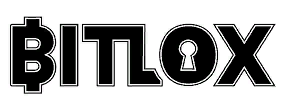 | BitLox hardware wallet, the official online store |  |
| 12 |  | Keystone hardware wallet, the official online store |  |
| 13 |  | ProKey hardware wallet, the official online store |  |
| 14 |  | NGRAVE hardware wallet, the official online store |  |
| 15 | 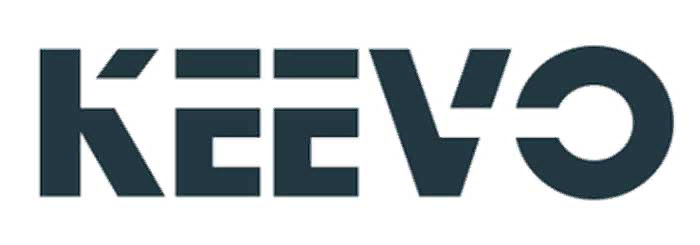 | Keevo hardware wallet, the official online store |  |
| 16 |  | GridPlus hardware wallet, the official online store |  |
| 17 |  | Ballet hardware wallet, the official online store |  |
| 18 |  | OPOLO hardware wallet, the official online store |  |
| 19 |  | Foundation (Passport) hardware wallet, the official online store |  |
| 20 |  | ImKey hardware wallet, the official online store |  |
| 21 |  | Tangem hardware wallet, the official online store |  |
| 22 |  | HashWallet hardware wallet, the official online store |  |
| 23 |  | Material Bitcoin hardware wallet, the official online store |  |
| 24 |  | ShieldFolio hardware wallet, the official online store |  |
| 25 |  | OneKey hardware wallet, the official online store |  |
| 26 |  | Blockstream Jade hardware wallet, the official online store |  |
| 27 |  | Cypherock hardware wallet, the official online store |  |
| 28 |  | Keepser hardware wallet, the official online store |  |
| 29 | 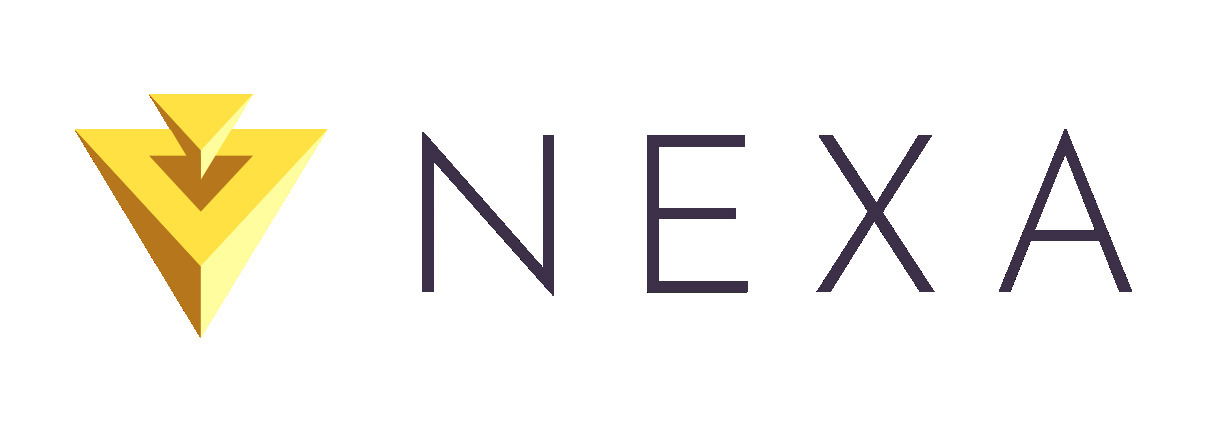 | NEXA hardware wallet, the official online store |  |


